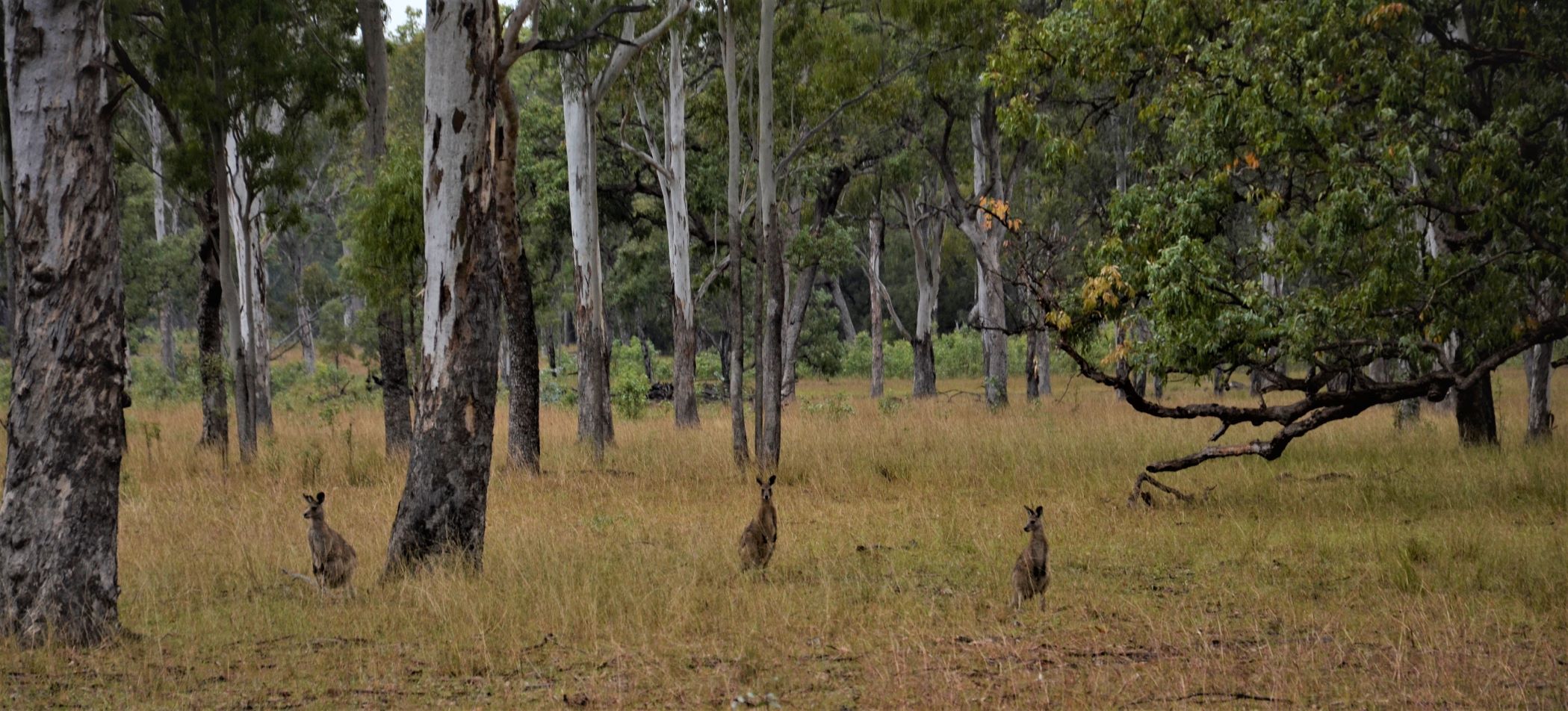Due south of the town of Clermont, is an area known as the Gemfields, which encompasses suitably named towns such as Rubyvale, Sapphire and Emerald. Intrigued, we headed inland to investigate. On the way we passed field after field of sugar cane and crossed countless ‘Cane train’ rail tracks also seeing the occasional train pulling what seemed like endless cars/cages full or empty depending on the direction of travel. We never knew that sugar cane was such a huge industry here. The road to Clermont also gives views of huge open cast coal mines, where the landscape has been completely transformed; the hills cut into barren, unnatural geometric shapes. From these come countless road-trains taking the coal to the coast where much is sold internationally. The scale of the mining here is quite shocking. The land really is being plundered and you have to wonder how the indigenous owners of the land feel about it.



One of many huge open-cast coal mines in the area
Passing through Clermont, we came across the Clermont Historical Centre on the edge of town. Unfortunately this was closed. However, through wire fences, we were able to see a wide range of old steam engines and other relics from the old mining days including a red bucket which stands in the yard outside. It really is huge!
We stayed just outside Clermont at Theresa Creek Dam a lovely campsite over a huge area with a beautiful lake and inquisitive and photogenic Rainbow Lorakeets visiting us on arrival, along with other birds singing in the morning. Australia really is a country of colourful birdsong, all of it alien to our ears, although we are getting used to some of it and can identify Australian Magpies, and Whipbirds by their call. This was another site where we had a campfire with the obligatory marshmallows.
We arrived in Rubyvale with 5 minutes to spare before the 12.15pm tour (they run hourly) at The Miners Heritage museum. We spent about 40 minutes underground with our guide who we had all to ourselves, and gave a very interesting overview of fossicking; how it was done in the past, and how it is done now. The miners are trying to get to ‘the wash’ – the layer of rock just above the bedrock in an area that would have been river, as gems, being heavier, would have sunk in the water to the riverbed. There are a few commercial mines in the area and other plots are bought by fossickers on a leasehold basis, so none of the housing on this land is allowed to be permanent. Our guide also pointed out a flock of micro bats living in once of the tunnels – really tiny bats, only around 1cm in length!
After our tour we decided to give fossicking a go. The museum is set-up for this, and we paid for a bucket of wash (which they get from the neighbouring mine) to sieve. After much washing, sieving and inspecting by holding up to sunlight, we took a collection of what we though might be gems back into the museum, and these were quickly inspected by a professional. Most of our finds were discarded (many were quartz that the kids thought were the prettiest), but we had found a nice clear purple zirconium stone of about 5mm diameter which was worth cutting and several very small sapphires.
If you want to take it more seriously, you can buy a fossicking license online and this gives you the right to go and dig and fossick in various allocated areas.
Passing the outskirts of Emerald, we drove south towards Carnarvon Gorge which several people had recommended to us. Camping in a roadside gravel area, we saw the most amazing sunset, but this was later followed by one of the worst thunderstorms we have ever experienced – it was very close and the thunder made the windows of the motorhome rattle. Huge forks of lightning lit up the whole sky.
The following day we set off to explore the Gorge. The drive in was a route that had kangaroos in abundance, our first sighting of so many, and also a memorial for a military aircraft which broke up in a violent storm in 1943, killing all on-board.
At the Gorge, after a brief look around the visitor centre and at the boards showing walking paths with distances and ability levels, we managed a walk of about 8 miles, the furthest part of which encompassed a wall of Aboriginal Art Work – a 60 metre stretch of really high, over-hanging rock (protected from the elements). The imagery here was created by spraying powder (using the mouth) around hands, boomerangs and shields.
Our walk also included a place called the amphitheatre – a huge hole created over millenia by swirling water as it passed through into the main gorge
Several river crossings were necessary, which some of us enjoyed more than others, although confidence improved massively by the time we had to cross back over them all! There are many longer walks here, and it really is an area worth visiting if you are a keen hiker.
Our next brief stop was in Eidsvold as we made our way back to the coast.





















Would have loved the gemstone hunting. How fantastic to have had some finds. Wonderful. Beautiful photo’s as always.
Awesome read yet again. Wow guys – makes me want to experience something similar. If I experience a third of what you’ve all witnessed I’ll be a happy person….Saying that – as i don’t drive – I’ll be wholly reliant on others so may have to give such adventurous thoughts a miss. More power to your elbow folks….